
ACR 2024 recommendations on the prophylaxis and therapy of X-ray contrast medium acute adverse effects*
1
Warming of Contrast Media
Warming of lodinated Contrasts
- ❯For high-rate (> 5 mL/second) IV LOCM power injections
- ❯For injections of viscous iodinated contrast (e.g., iopamidol 370, and presumably other contrast media with a similar or higher viscosity)
- ❯For direct arterial injections through small-caliber catheters (5 French or smaller)
- ❯For intravenously injected arterial studies in which timing and peak enhancement are critical features
Warming of Gadolinium Contrasts
- ❯Suggestions Gadolinium-based contrast media are administered at room temperature (15°C to 30°C) and according to package inserts, should not be externally warmed for routine clinical applications
2
Acute adverse reactions
Definition
- ❯An adverse reaction which occurs within 1 hour of contrast agent injection.
Classification
- ❯Acute adverse events can be categorized as either allergic-like or physiologic, and organized into three general categories of severity (mild, moderate, or severe), the following is a suggested classification system for contrast media:

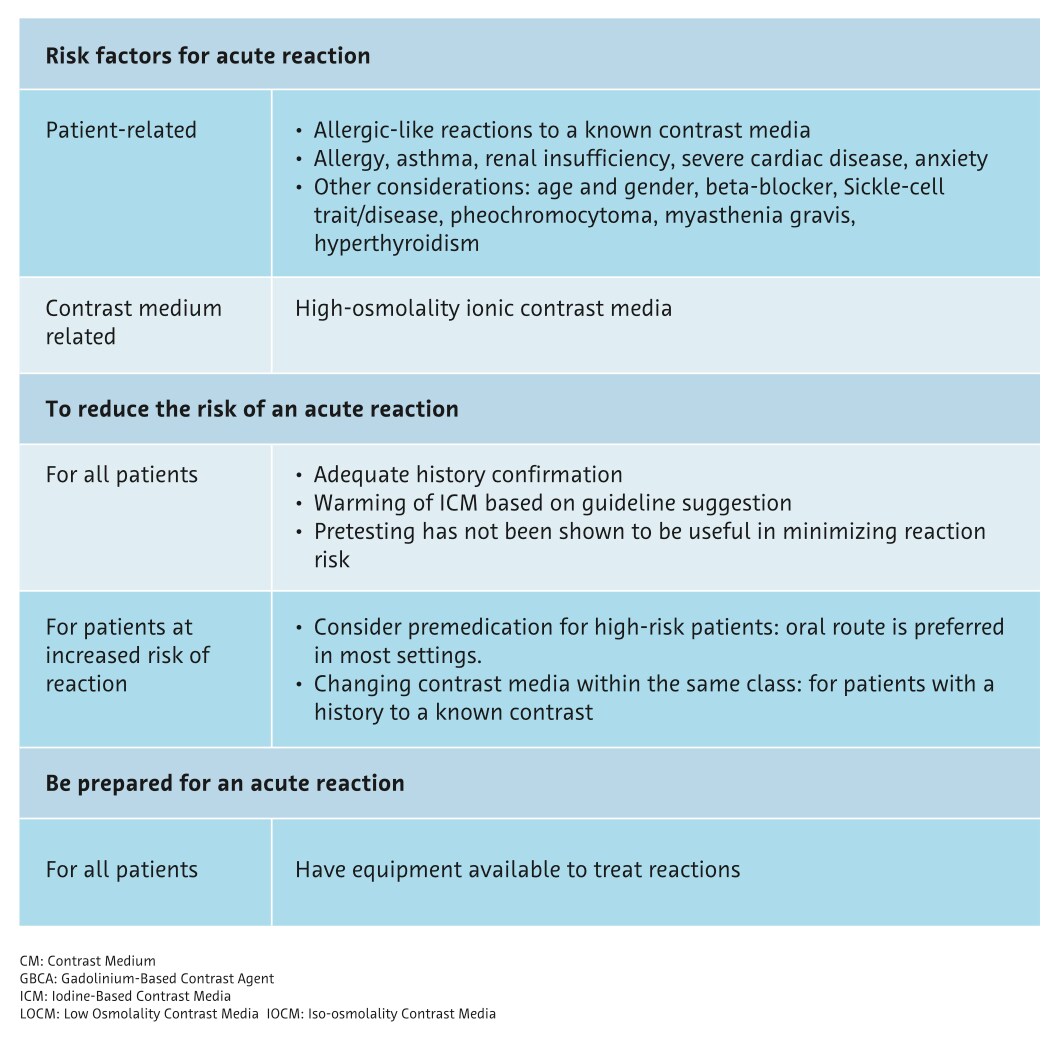
3
Management of acute reactions to contrast media in adults
HIVES (Urticaria)

DIFFUSE ERYTHEMA
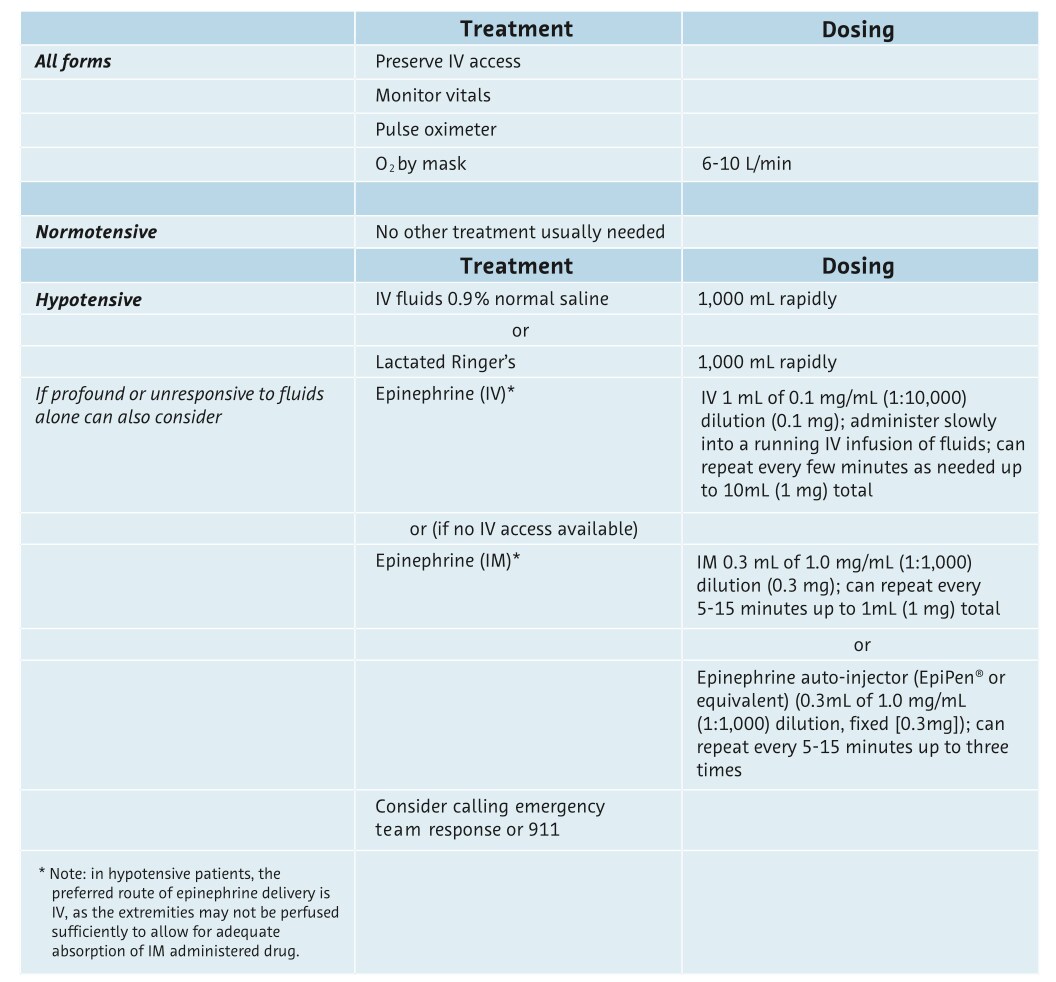
LARYNGEAL EDEMA
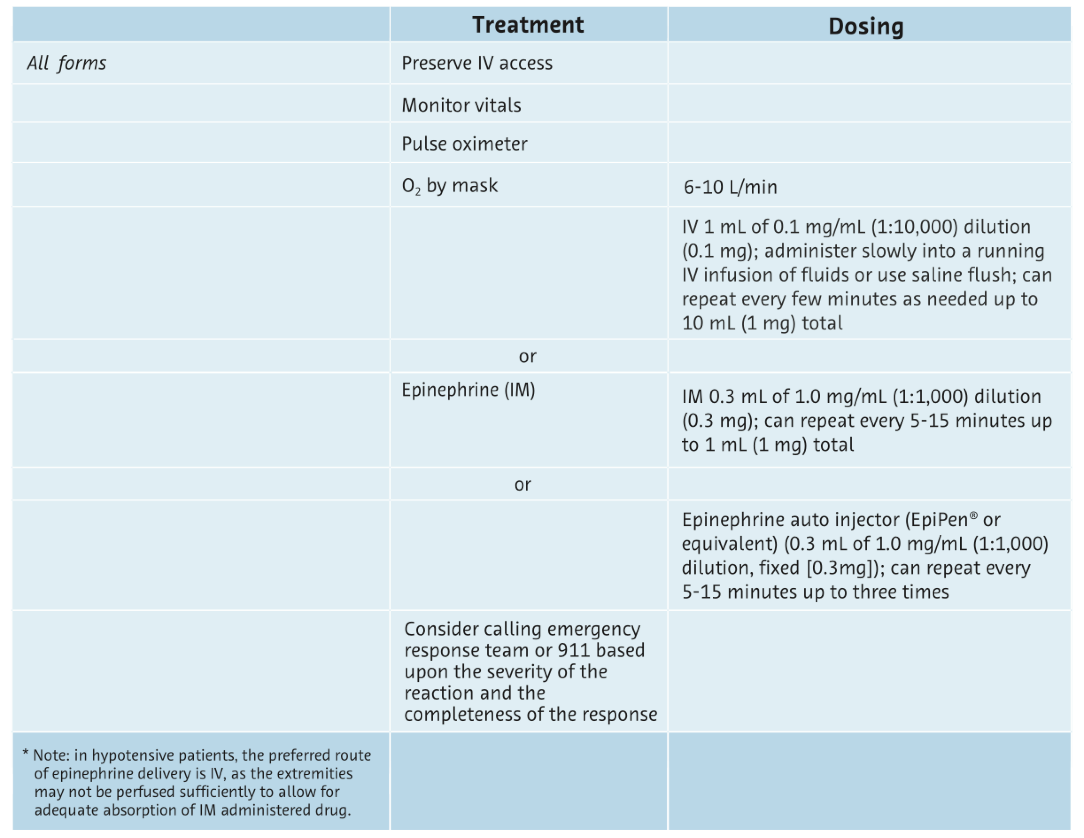
HYPERTENSIVE CRISIS
(diastolic BP> 120mm Hg; systolic BP > 200mm Hg; symptoms of endorgan compromise)
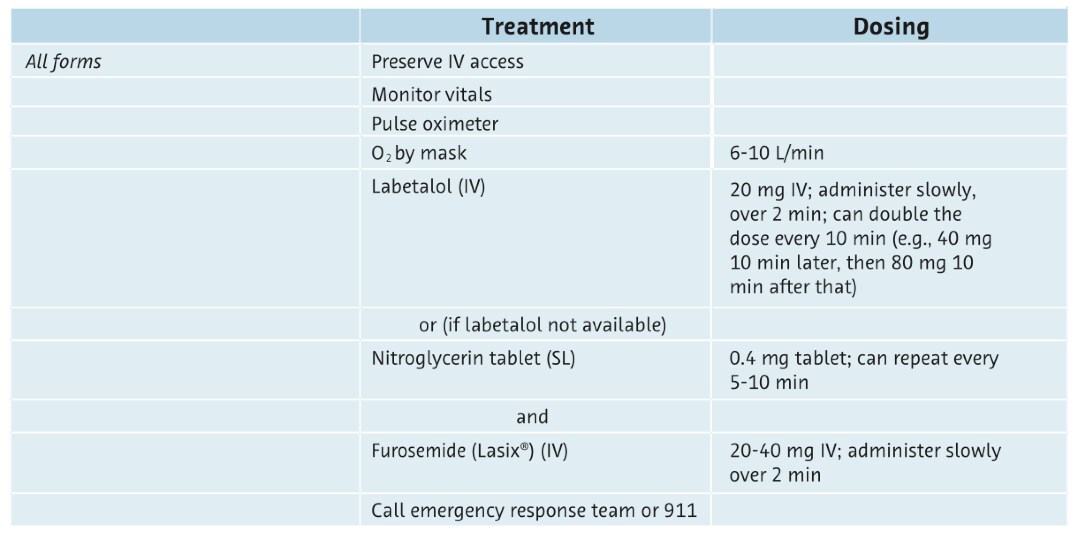
PULMONARY EDEMA

SEIZURES/CONVULSIONS
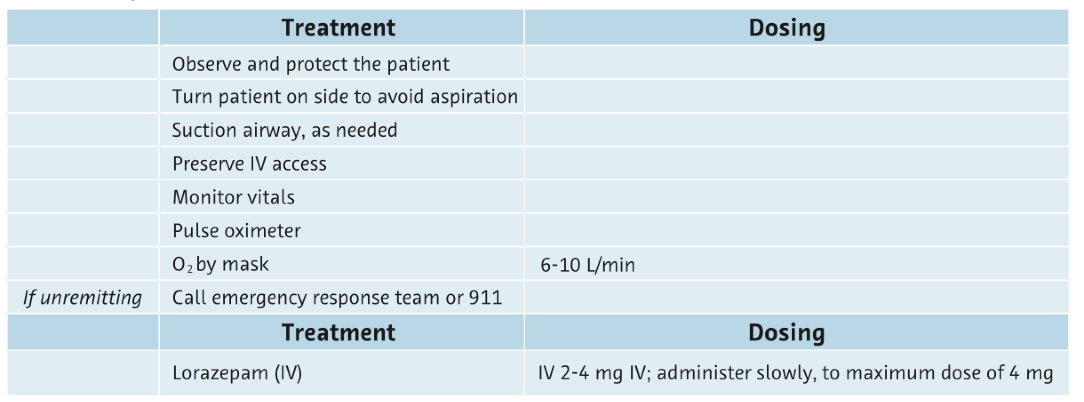
HYPOGLYCEMIA

ANXIETY (PANIC ATTACK)

REACTION REBOUND PREVENTION
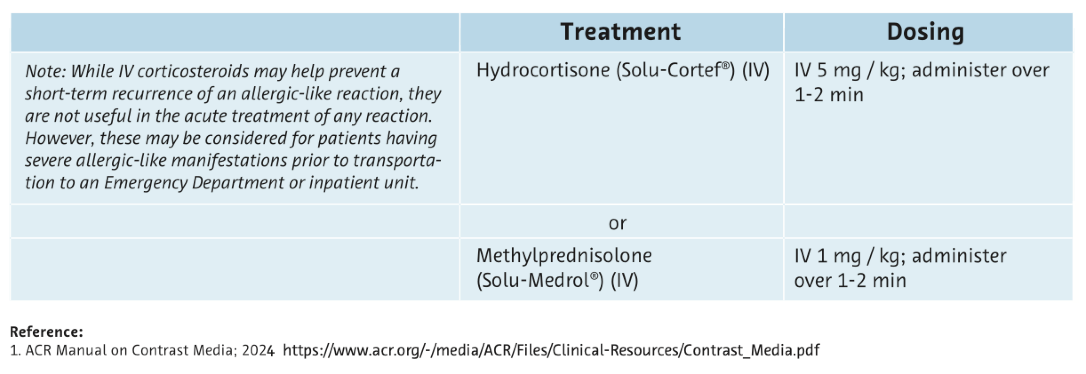
BRONCHOSPASM
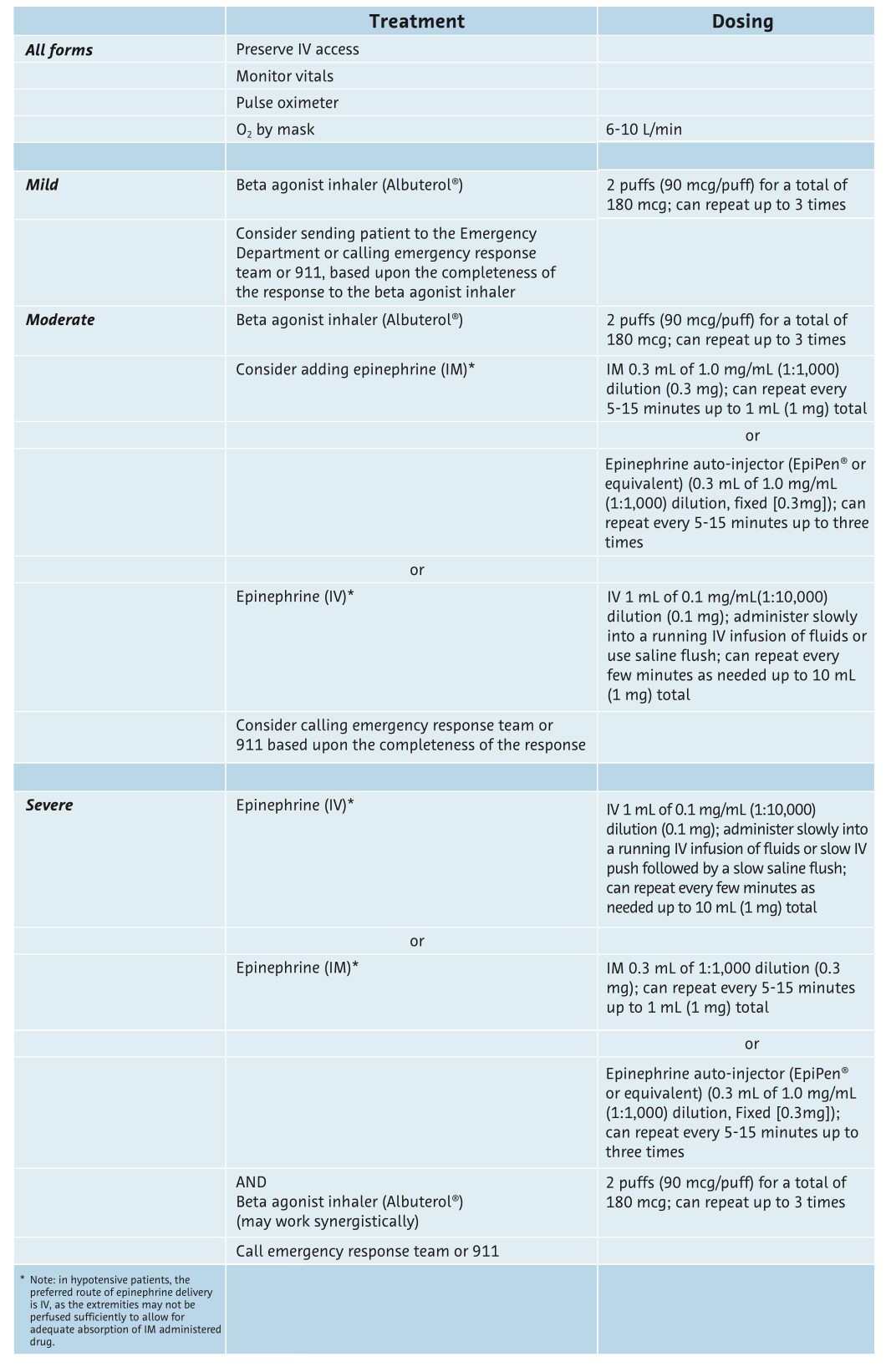
HYPOTENSION (systolic blood pressure < 90 mm Hg)
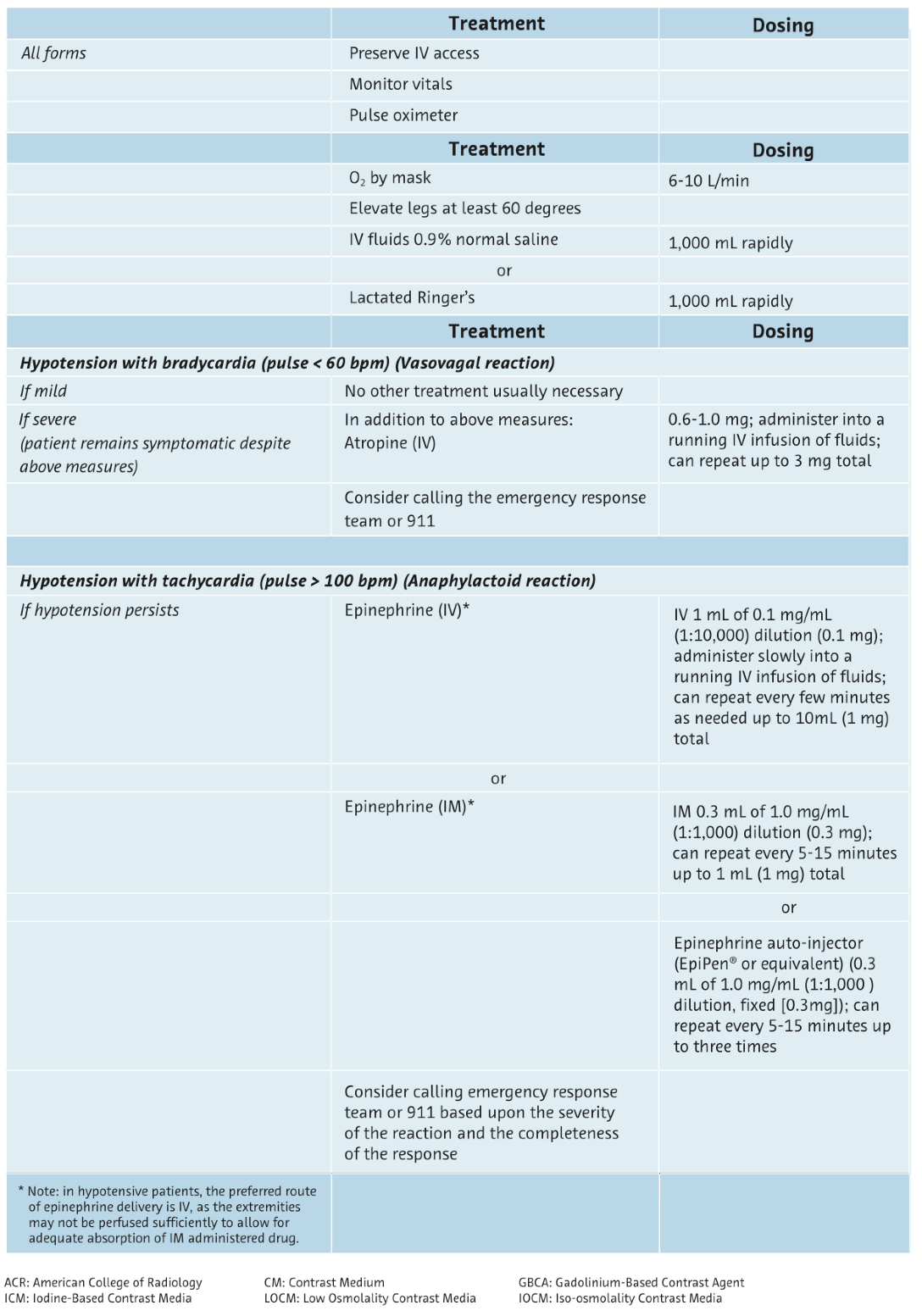
- * For full safety information please refer to the prescribing information of contrast medium/media in use in your department. Not covering renal and thyroid safety, delayed skin reactions and other topics.
After administration of antihistamines, the patient may no longer be insured to drive a car or operate machinery
Reference:
1. ACR Manual on Contrast Media; 2024 https://www.acr.org/-/media/ACR/Files/Clinical-Resources/Contrast_Media.pdf
ESUR 2018 (version 10.0) recommendations on the prophylaxis and therapy of X-ray contrast medium acute adverse effects*
1
Precautions for a contrast medium injection are:
- ❯Explain to the patient about the examination and risk
- ❯Anxiety-free examination atmosphere
- ❯Secure that first line drugs and instruments are available:
- ❯Determine whether the patient is at risk of any contrast medium reaction (see risk factors below)

- • Resuscitation trolley should be available in the department.
- • Emergency numbers for the hospital resuscitation team should be in the examination room.
- • Medical and technical staff should receive regular education in the management of acute adverse reactions and in resuscitation technique.
- • Equipment for collecting blood for tryptase and histamine measurement should be readily available.
- • Keep the patient in a medical environment for 30 minutes after contrast agent injection.
2
Acute adverse reactions
Definition: An adverse reaction which occurs within 1 hour of contrast agent injection.
Classification
Acute reactions are either allergy-like, hypersensitivity reactions or chemotoxic responses. Allergy-like reactions may or may not be true IgE mediated allergy.
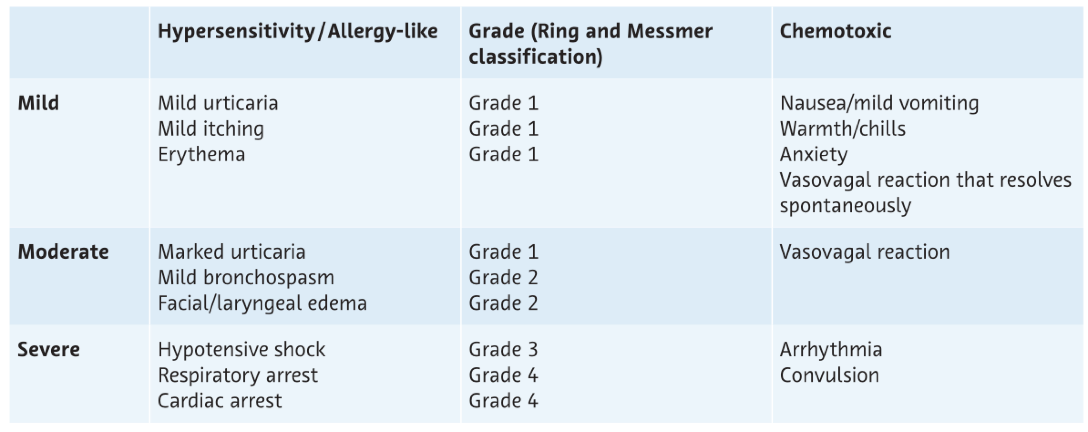
NOTE:
- • Be aware that what at first appears to be a mild reaction may develop into a more serious reaction.
- • Not all symptoms experienced by patients in the hour after contrast agent injections are adverse reactions to the contrast agent.
- • Patient anxiety may cause symptoms after contrast agent administration (Lalli effect).
- • When a new contrast agent is first introduced to a department, adverse effects tend to be over-reported (Weber effect).
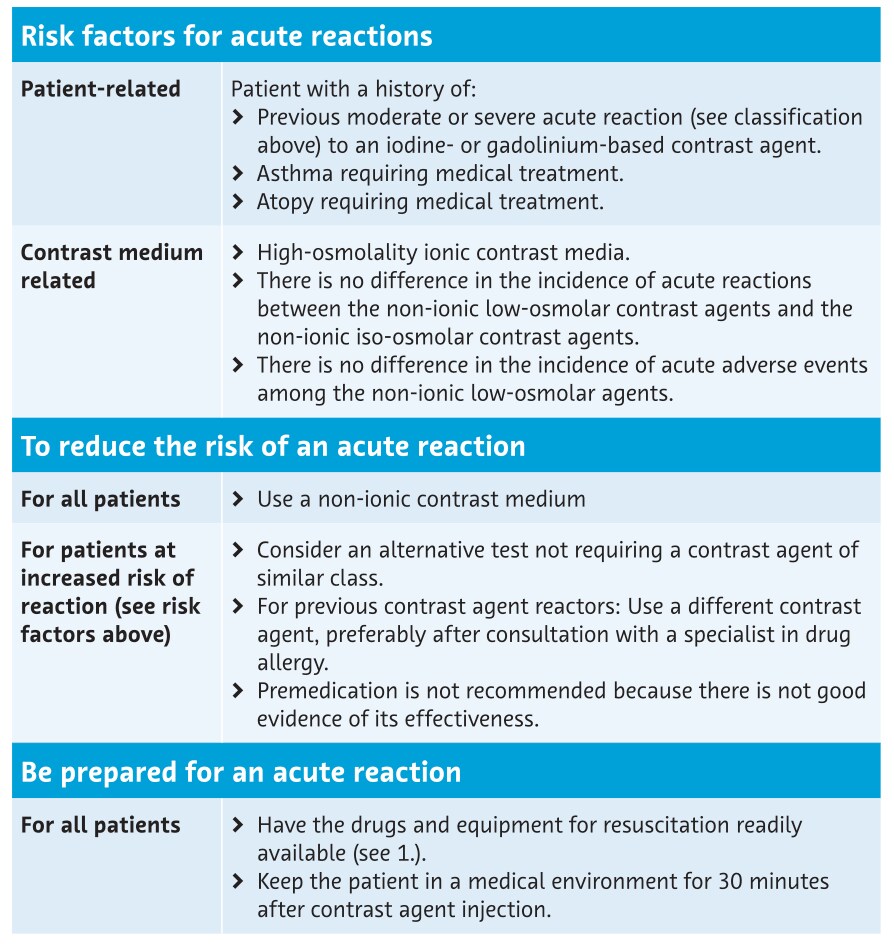
3
Simple guidelines for first line treatment of acute reactions to contrast media

When an acute reaction occurs, check for the following:
- ❯Skin erythema, urticaria (undress the patient to inspect the whole body).
- ❯Nausea, vomiting.
- ❯Decreased blood pressure, abnormal heart rate.
- ❯Dyspnea, bronchospasm (requires auscultation for reliable diagnosis).

- * For full safety information please refer to the prescribing information of contrast medium/media in use in your department.
Not covering renal and thyroid safety, delayed skin reactions and other topics.
After administration of antihistamines, the patient may no longer be insured to drive a car or operate machinery.
Reference:
1. ESUR Guidelines on Contrast Media Version 10.0; 2018


